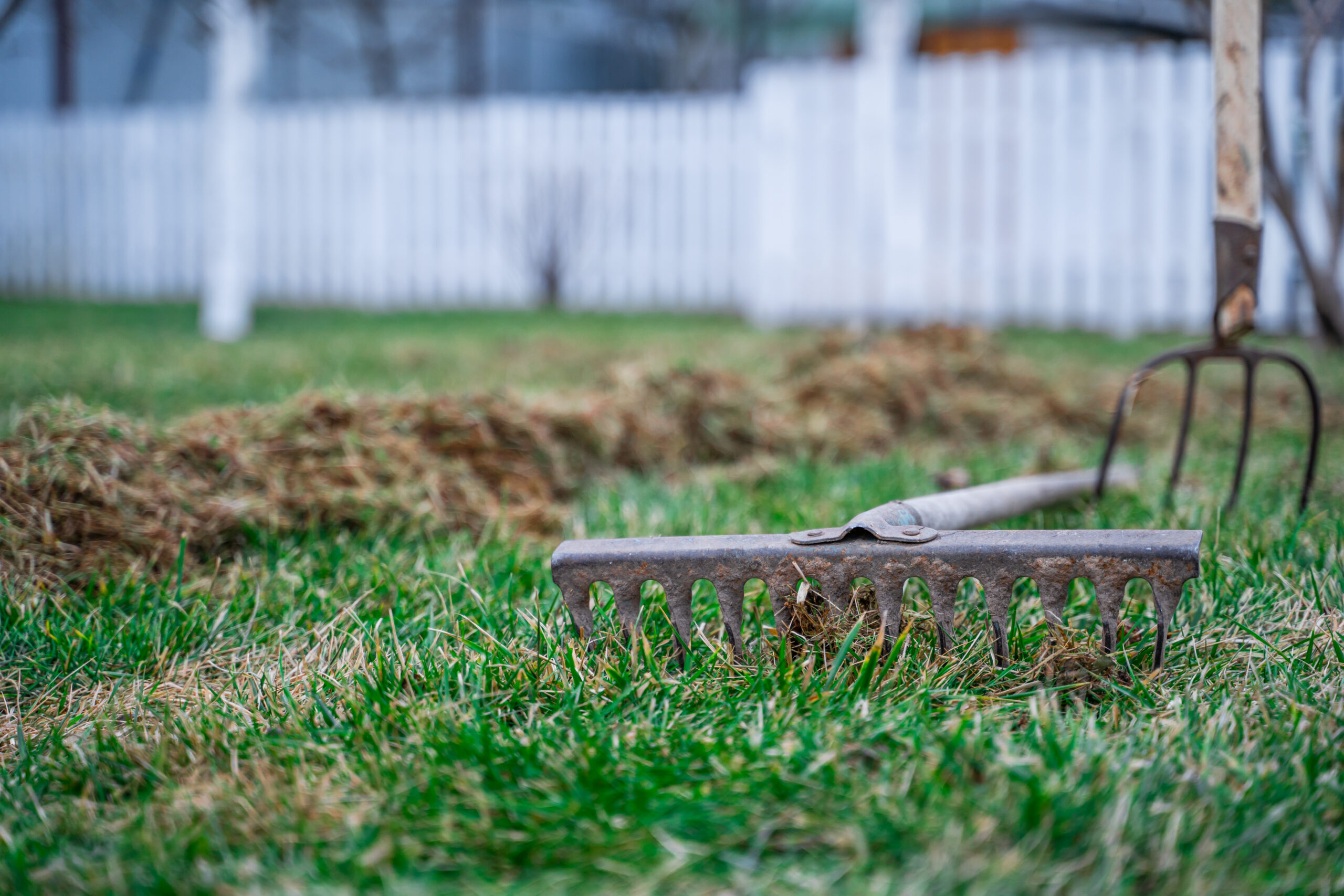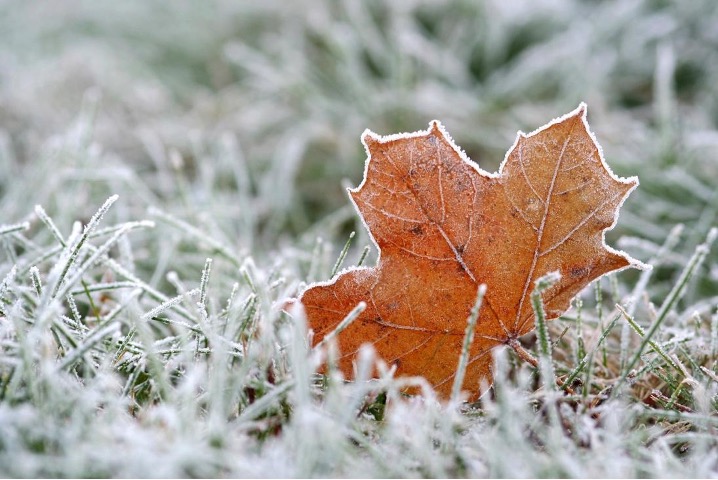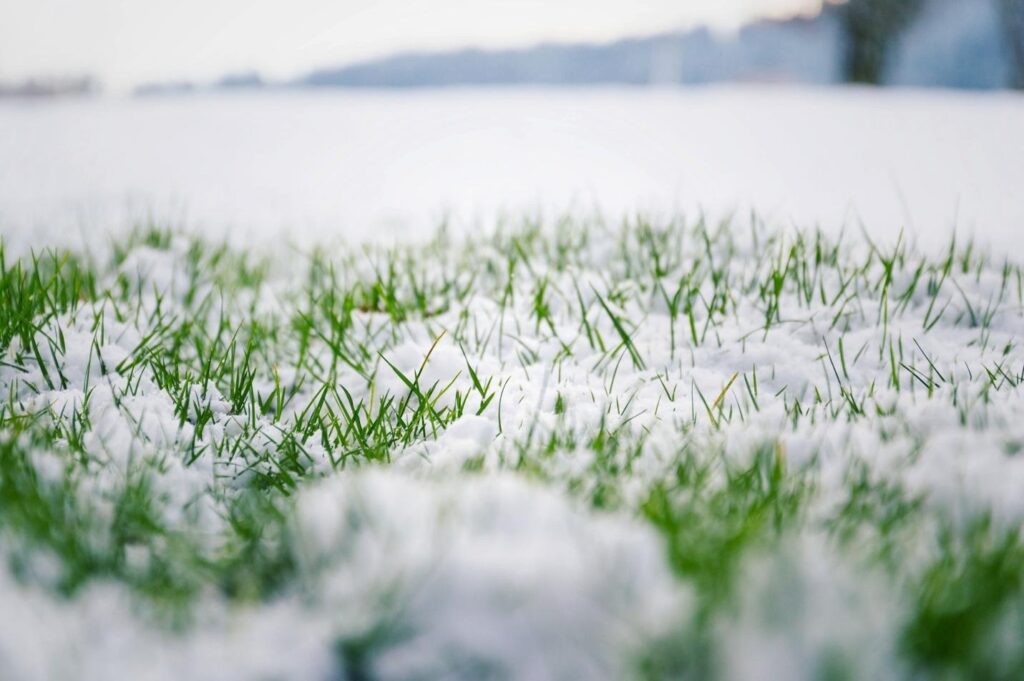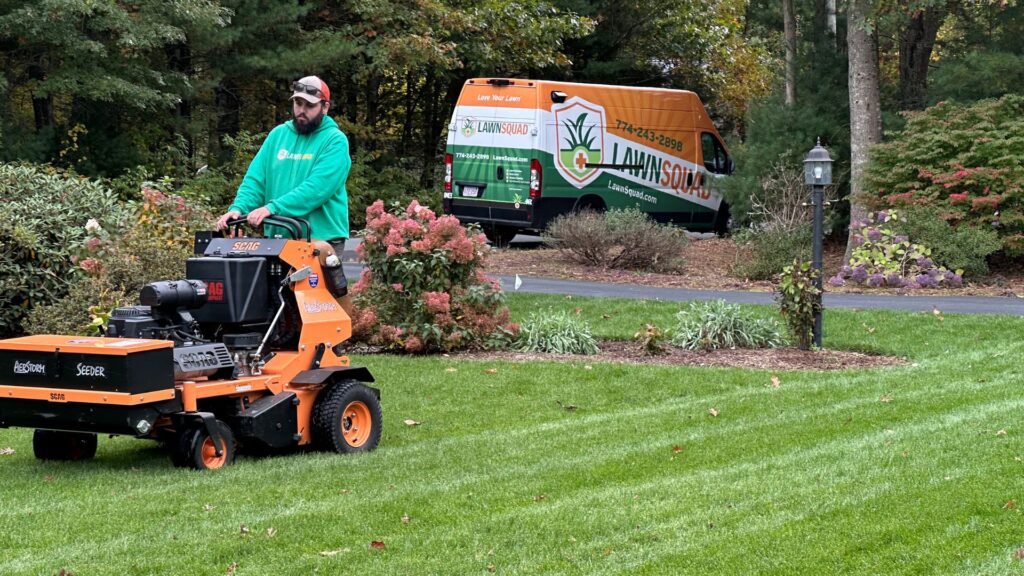Spring is when your lawn starts waking up from its winter rest, but sometimes it needs some help getting back on track. Patches, slow growth, and leftover snow damage can all stand in the way of a thick, green yard. You can give your grass a healthy head start this season with the right approach.
Winter Dormancy Leaves Grass Hungry
When spring finally settles in, your lawn starts waking up—but that process doesn’t happen immediately. The grass has quieted after months of cold weather, short days, and packed snow. What you see in March and early April isn’t dead lawn, it’s dormant lawn. The roots slow down during the winter, and the blades on top turn brown or brittle while the plant saves energy.
Once the soil warms up and daylight stretches longer, your grass pulls nutrients again, pushing out new growth. But that rebound takes fuel. Without help, the lawn might stay dull and patchy longer than needed. Light raking helps lift the dead material and clear out matted blades. That lets sun and air reach the new shoots, trying to come up from underneath. You’re not just cleaning—you’re jumpstarting the recovery process with every rake pass.
Columbus Soil Needs Breathing Room
The ground in central Ohio takes a beating through the winter. Snow compacts the surface. Foot traffic across frozen turf presses the soil even tighter. What’s left in spring is often dense, heavy ground that doesn’t let air or water move easily. That’s a problem for grass roots stretching out and growing again.
Columbus tends to have clay-heavy soil, which holds water but doesn’t drain quickly. That makes it prone to compaction, especially after a wet freeze-thaw cycle. If your yard feels spongy in some spots and rock-hard in others, your soil might be holding back your grass.
Aeration breaks up compacted ground and creates small openings that let roots take in air and water more easily. When the soil isn’t packed tight, your grass has more room to grow. That simple step helps the lawn fill in faster and finally start showing the healthy green color you’ve been missing since winter began.
Salt, Plows, and Sidewalk Damage
City and neighborhood streets get a lot of salt during an Ohio winter, and all that runoff has to go somewhere. A lot of it ends up on the edge of your lawn. Salt-heavy water can drain into the turf along sidewalks and driveways when snow piles melt. This pulls moisture away from roots and causes browning, thinning, or permanent dead spots.
You might also notice areas along the curb that look scraped or ragged. Snowplows can clip the edge of the grass by accident, tearing into the turf or pushing gravel into the yard. Those strips don’t just look bad—they create weak points where weeds like to move in. Washing those areas with clean water can help flush out salt. After that, you’ll want to reseed or lay down fresh soil if the roots took a hit. It’s a good idea to walk the perimeter of your yard every spring just to spot these edge problems before they spread further inward.
Temperature Swings Can Stall Growth
Spring in Columbus is unpredictable. Some years, you’ll get a week of 70-degree sunshine in March. Other years, it snows in April. Those back-and-forth swings confuse your lawn. Warm spells might push a quick green-up, only for a sudden cold snap to shut it back down. This stop-start pattern leaves some areas uneven, especially if parts of the yard get more sun than others.
South-facing slopes or corners near sidewalks usually warm up faster, but shaded zones or low spots stay colder longer. That’s why one part of your lawn may look fine, and the rest still feels stuck in winter. You can help even the ground by gently raking those slower areas and applying a starter fertilizer to support early root development. Once nighttime temps hold steady above freezing, the whole lawn will catch up—but a little help speeds that process along.
Thatch Buildup Blocks New Growth
Underneath your lawn is a thin layer of old roots, stems, and dead grass called thatch. A little of it is normal, but too much acts like a barrier. It blocks sunlight, holds extra moisture, and prevents fertilizer from reaching the roots. After winter, the thick thatch keeps your grass from growing the way it should.
You can feel it when you walk across the yard. If it feels springy or soft, but you can’t see the soil when you part the grass, you probably have a thatch problem. Dethatching in spring helps clean out that layer. It doesn’t mean tearing up the lawn—it’s more like giving it a deep brush. Whether with a manual rake or a dethatching machine, the goal is to clear space for the new blades to break through and let air move between the soil and the surface again.
Spring Seeding in Patchy Spots
Spring is a great time to spot-seed if winter leaves behind bare patches or thin sections. The goal isn’t to overhaul the whole yard but to boost weak areas before weeds move in. Timing matters. You want to seed once the soil is warm enough to support germination but early enough that the new grass can get established before hot summer days make it harder to grow.
Start by loosening the soil in the problem areas. Then spread seed that matches your existing lawn type. Water lightly but regularly to keep the seedbed damp while the roots start to take hold. In Columbus, that sweet spot usually falls somewhere between mid-April and mid-May, depending on how the spring shapes up. Suppose you’re combining this with aeration, and it’s all the better. The holes from aeration help the seed settle and give it a place to grow with less competition from weeds.
Feeding the Lawn After a Long Rest
Once your lawn starts showing signs of life, it’s hungry. The roots have been quiet through the cold, and they need nutrients to grow deep and strong again. Early spring fertilizing supports root development and encourages healthy blade growth. You don’t need heavy nitrogen at this stage. A balanced blend gives your lawn what it needs without pushing it to grow too fast.
Slow-release products work best in the Columbus area. They feed the lawn gradually, helping it grow at a steady pace without stressing the plant. You’ll also want to be careful about timing if you’re planning to apply a weed prevention treatment. Some pre-emergent treatments stop seeds from sprouting, which means they can block new grass seed, too. The right order and timing will depend on your lawn’s condition and what kind of recovery it needs.
Keeping a Routine Means Less Work Later On
If you’ve dealt with the same bare spots or uneven growth the past few years, spring prep might not be enough on its own. That’s when a full-season lawn care plan starts to make a difference. It sets your lawn up with the right treatments at the right times, from fertilizer and weed control to aeration and disease prevention.
Routine care gives you a chance to catch issues before they become full-blown problems. You also get a better sense of how your lawn responds each season, which helps you make better choices later. If your grass bounces back slowly every year or looks great in spring but fades by summer, a regular plan can smooth out those swings. Columbus weather isn’t always predictable, but your lawn care can be, and that consistency makes a big difference.
Save Your Yard and Revive It for Spring
Prepping your lawn in early spring makes a big difference in how it looks and holds up through the year. From clearing winter buildup to feeding the soil, small steps now lead to better growth later. If you’re not sure where to begin or want help creating a seasonal lawn care plan, call Lawn Squad® today, and we’ll help you get started. We also offer year-round lawn care services, including lawn pest management.






